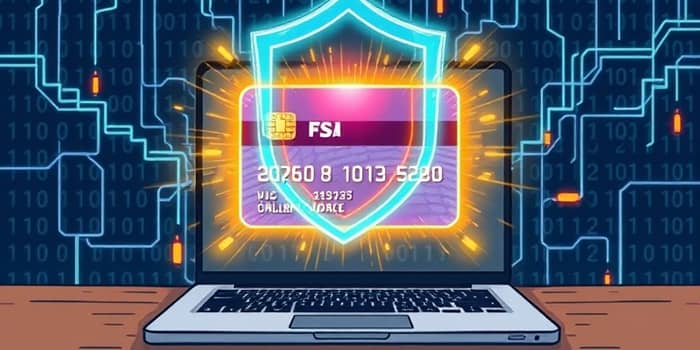In an era of relentless data breaches and rising cyber threats, safeguarding your financial information has never been more critical. Every online transaction carries a risk of exposure, leaving your real card details vulnerable to theft.
Virtual credit cards (VCCs) are reshaping the landscape of digital payments by adding a robust layer of protection between you and potential fraudsters. These temporary, unique numbers function as stand-ins for your physical card, ensuring that your primary account remains undisclosed.
With rising fraud losses projected to exceed $10 billion in coming years, adopting VCCs is no longer optional but essential for anyone who values their online security.
Read on to discover how these digital shields work and how you can integrate them into your financial toolkit today.
Understanding Virtual Credit Cards
A virtual credit card is a temporary sixteen-digit number linked to your actual credit line. Rather than exposing your permanent card number, each VCC generates a new identifier that can be single-use or time-bound, depending on your preferences.
Disposable virtual cards produce a fresh number for one transaction, while those with specific expiration dates or spending limits can be used multiple times until they deactivate. This flexibility empowers you to tailor security to every purchase scenario.
Because VCCs cannot be copied or used at physical terminals without digitization, they offer specialized protection for online and phone transactions, reducing the attack surface for fraud.
Key Security Benefits of Virtual Credit Cards
First and foremost, VCCs help by masking your real credit card number. During an online purchase, the merchant sees only the virtual identifier, not your primary account data.
Additionally, VCCs employ advanced encryption and tokenization to replace sensitive data with unique tokens for each transaction. Even if a breach occurs, stolen tokens cannot be traced back to your actual card.
You can also instantly cancel a compromised virtual number, achieving immediate shutdown via mobile or web apps and preventing any future unauthorized charges.
By limiting the card’s validity or spending amount, you can reduce the financial damage and administrative burden associated with replacing compromised physical cards and updating vendor records.
Comparing Virtual and Physical Cards
While physical credit cards remain essential for in-person payments, virtual cards excel in online defense. The table below highlights the core distinctions:
This comparison demonstrates why virtual cards serve as a strategic complement to your regular wallet, especially for high-risk or unfamiliar merchants.
Real-World Use Cases
Virtual credit cards shine in scenarios where risk is elevated or control is paramount. Consider these practical applications:
- Signing up for free trials or subscription services without revealing your permanent card details.
- Making one-time purchases at unfamiliar or low-reputation merchants.
- Managing corporate expenses by assign unique cards to each team member with individual budgets.
- Booking hotels or car rentals where holds are placed on the card, ensuring no unauthorized access to your main account.
These use cases illustrate how both consumers and businesses can leverage VCCs to streamline spending while minimizing vulnerability.
Potential Drawbacks and How to Address Them
Despite their strengths, virtual cards have limitations you should consider:
- Eligibility constraints—certain banks and issuers may not yet support VCC offerings.
- Refund complications when returning items purchased with an expired or deactivated virtual card.
- Restricted use at physical point-of-sale terminals, requiring pre-loading into digital wallets.
- Verification challenges at hotels or car rental offices that mandate presenting the original card.
To navigate these issues, always check your issuer’s VCC policy, align expiration dates with purchase lifecycles, and keep a backup physical card for in-person needs.
Tips for Maximizing Your Virtual Card Benefits
Adopt these strategies to harness the full potential of virtual cards:
- Create disposable cards for any unfamiliar online merchant to enjoy a single-use disposable virtual card number barrier.
- Integrate your VCC with browser extensions or mobile apps to monitor transaction activity in real time and receive instant alerts.
- Customize spending caps and expiration timelines to maintain your financial privacy and control without ongoing manual oversight.
- Link virtual cards to digital wallets and password managers, ensuring smooth and secure checkouts across devices.
Implementing these best practices transforms your online spending into a structured, secure process with minimal risk.
Conclusion
In a digital economy fraught with cyber threats, virtual credit cards deliver a powerful defense by anonymizing your payment data and empowering you with granular control over every transaction.
By integrating VCCs into your routine, you not only shield your primary account but also simplify budget management and fraud resolution. Embrace this modern tool today and step confidently into a safer online payment landscape.
Whether you’re a cautious consumer or a finance professional, virtual credit cards offer an elegant balance of convenience and security, turning every transaction into a controlled, risk-aware event.
References
- https://www.experian.com/blogs/ask-experian/are-virtual-credit-cards-safe/
- https://www.capitalone.com/learn-grow/money-management/virtual-cards-shopping-online/
- https://allaboutcookies.org/what-is-a-virtual-credit-card
- https://use.expensify.com/resource-center/guides/what-is-a-virtual-credit-card
- https://www.oldnational.com/resources/insights/benefits-and-uses-of-virtual-credit-cards-for-businesses/
- https://www.privacy.com/blog/what-is-a-virtual-credit-card
- https://www.bluevine.com/blog/benefits-of-virtual-credit-cards-for-businesses
- https://www.chase.com/personal/credit-cards/education/basics/how-virtual-credit-card-numbers-protect-information










